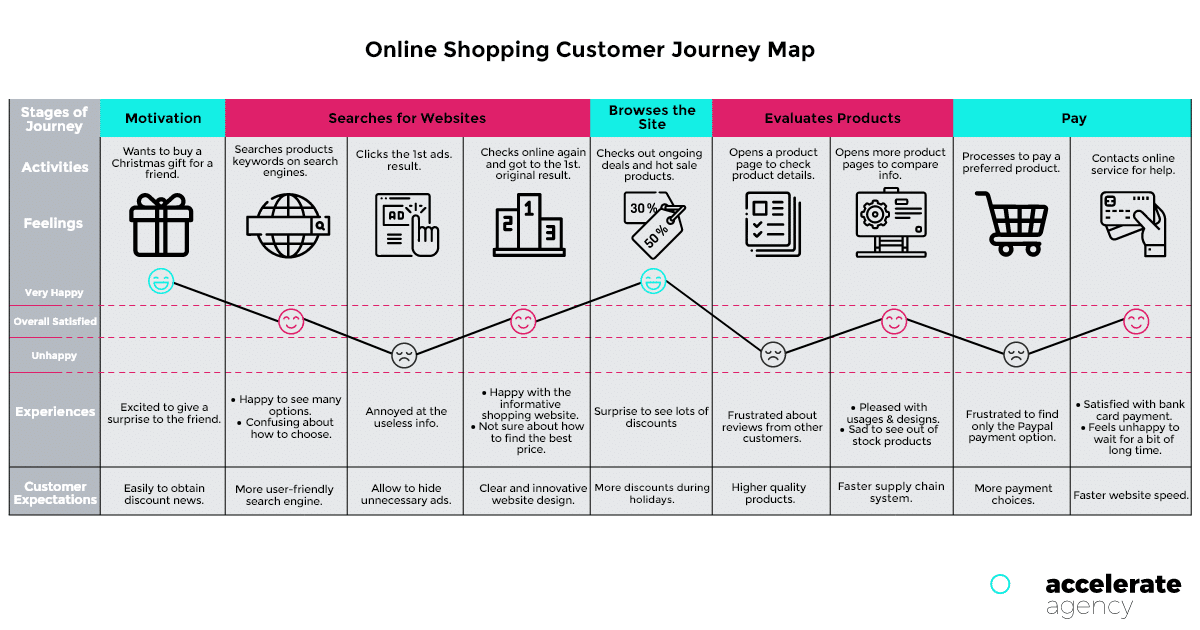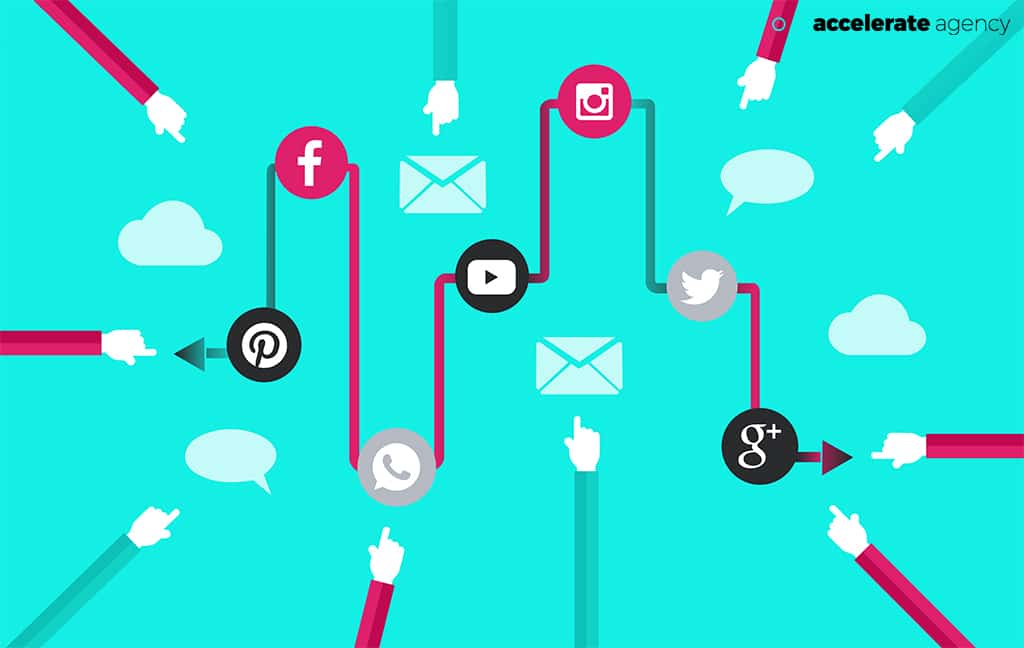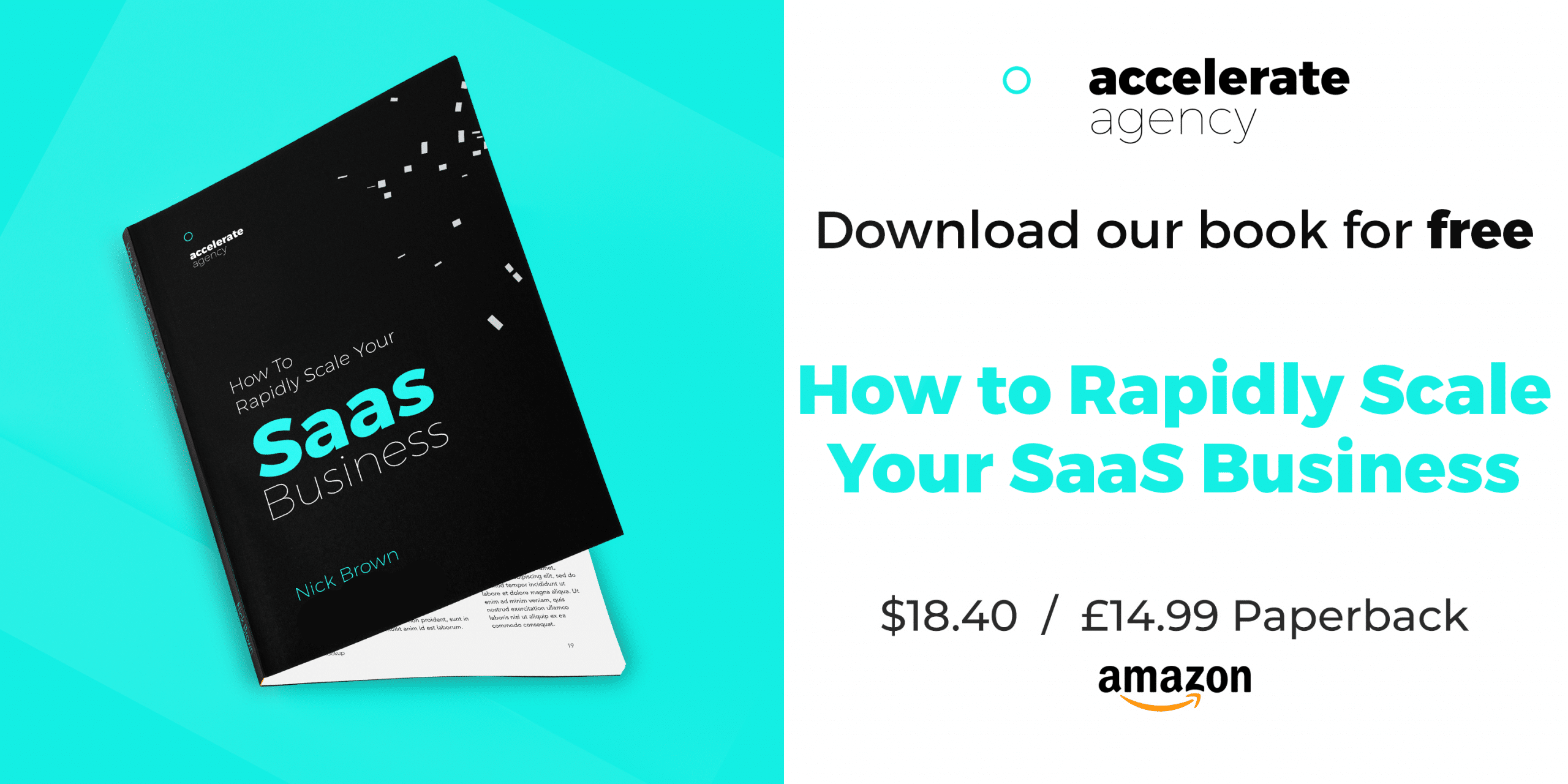SaaS Marketing Guide
SaaS Customer Journey: Mapping Your Way To Customer Success
Book a FREE SEO Strategy Consultation >
Further Reading:
- SaaS Marketing Strategy
- SaaS Content Marketing
- SaaS SEO
- SaaS Account Based Marketing
- SaaS Email Marketing
- SaaS Inbound Marketing
- SaaS Retargeting
- SaaS Marketing Budget
- SaaS Marketing Plan
- SaaS Referral Marketing
- SaaS Demand Generation
- SaaS Customer Journey
- SaaS CMO Strategy
- SaaS link building
- SaaS Lead Generation
- SaaS Landing Page Examples
- SaaS CMS
- SaaS Customer Churn
- SaaS Marketing Automation
- SaaS Marketing Campaigns
- SaaS Marketing Agency
- SaaS SEO Agency
- SaaS Link Building Services
It doesn’t matter what you sell, or how you sell it, customer satisfaction goes a long way to improving your customer retention rates, reducing churn, and attracting new customers due to both better brand reputation and word-of-mouth recommendations.
A big part of making your customers happy is understanding them, and how they move from being unaware of your products to making that decision to buy, and beyond. This is especially true in the SaaS sector where you’re relying on retaining customers and the MRR (Monthly Recurring Revenue) they provide through their subscription fees.
One way to help build your SaaS business is to work with experts such as accelerate agency who can help improve your results. The main way you can understand your customers better is by mapping their journey as they move through your sales funnel and become signed-up, long-term customers.
Let’s find out more about the SaaS customer journey. Skip ahead if you like:
What is a customer journey map?
Benefits of building a customer journey map.
01. What is a customer journey map?

A customer journey map is a visualization of how a customer engages with your brand or product. It tells the story of every engagement, from the first time they visit your website through to decision making and purchasing from you.
The idea behind the customer journey map is to give you the POV of the customer, so that you can identify strengths and weaknesses in their journey, allowing you to improve the overall customer experience.
The map should show every touchpoint involved in that journey and highlight any pain points. The engagements should include everything from clicking on a social media post to calling your support team with questions or issues.
Book a FREE SEO Strategy Consultation
02. Benefits of building a customer journey map

- Get a 360° view of your customers’ interactions with you that allows all teams in your organization to understand those interactions. This can include identifying where you could improve your SEO, an area where accelerate agency can be of real benefit.
- Create empathy with your customers by better understanding any pain points they encounter and how the experience is, as a whole.
- Identify any flaws in your service that may be causing negative experiences for your customers.
- Predicting behaviour at different touchpoints by seeing from the customer’s POV.
03. How to build a SaaS customer journey map

- Avoid making your map overly complex. While you do want to understand the whole journey, you don’t want to get bogged down by the minutiae. Create an initial storyboard that includes all the relevant info and touchpoints. If your first draft looks too complex, examine what may be irrelevant to helping improve customer experience.
- Tie any map you’re creating to existing customer data. Where data is minimal due to that engagement being “rare”, then you don’t need to include that step. Mapping is about getting an idea of how the majority of your customers interact with you.
- Focus on the main three areas that customers encounter or where they interact with you:
- Stages of the customer lifecycle. These are the different steps customers take in interacting with your brand. The first stage is usually as a visitor to your site, and the later stages can include contact with customer support.
If you’re using CRM tools, then you may find that these stages are defined within them or within any marketing automation tools. As SaaS is mainly a B2B model, your stages should be something like this:
- First time visitor (to your site or to your social media platform). This is where accelerate agency’s top level content can engage them and start increasing their interest.
- Lead. This is anyone who has had some interaction with your business.
- Qualified lead. A lead who has moved forward with their interest and who may be almost ready to buy.
- Opportunity. The point at which your salespeople, or your automated system, identifies that there is a chance to close the sale.
- Customer. The lead has now made a purchasing decision and you have onboarded them as a new customer.
- Aftersales. This is not just about customer support, but also any post-purchase interactions. It could include customer service, upselling, contract renewal, or offering other services.

- Customer journey paths. Identify the most common paths that customers take from discovery to purchase. It should also include the following:
- Sales processes. How do you get customers to the signup point? Look at free trials, direct sales contacts, and requests for product demos.
- Product paths. Did the customer discover you themselves? Were they approached by a salesperson? Were they recommended by another user?
- Pricing. What tiers did customers express an interest in? Most SaaS products offer various tiers from solo to enterprise.
- Segmentation. You may want to map different types of customers, from private individuals through small businesses and up to large enterprises.
- List all conversion events. That doesn’t mean where they convert to a paying customer, but every event that saw them move a stage forward in the customer lifecycle. Identifying what makes your customers progress, or what stops them from progressing, is a crucial part of the customer map.
- Start building your map. You now have all the ideas and data you need to build your initial map. Don’t be worried if it looks messy at first, this is a process you need to refine and, as with written marketing content, you start with a first draft.
A good idea here is to try initial drafts on paper or on a whiteboard. As the whole purpose is to visualize the journey, having it off-computer can give you a better idea when building and editing it. Find a format that you and your team are most comfortable with and which you feel best illustrates how YOUR customers interact.
04. The takeaway

SaaS can be a complicated sector. Having a detailed customer journey map can help you understand your customers better, and thus improve their experience.
You may also want to consider engaging an expert such as accelerate agency to improve your content and SEO approach, and tailor it better to your unique customer journey.
A good customer journey map can also help identify pain points that need rectifying to make the whole process smoother for your customers. Seeing things from your customers’ perspectives gives you a better idea of how to provide the best level of service.